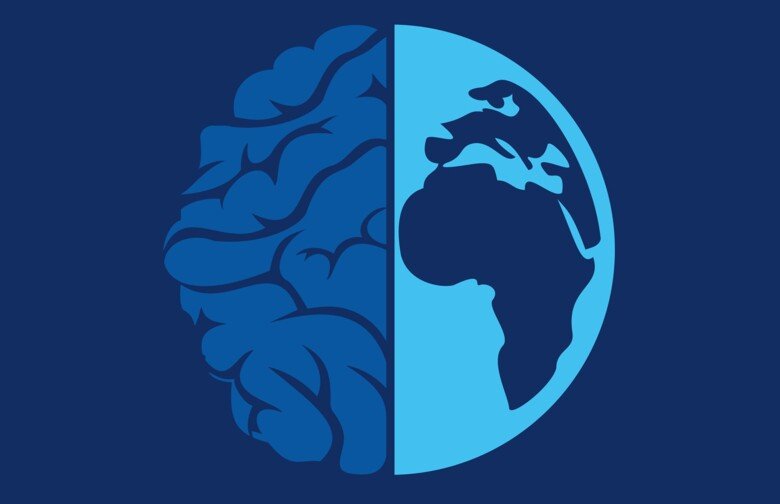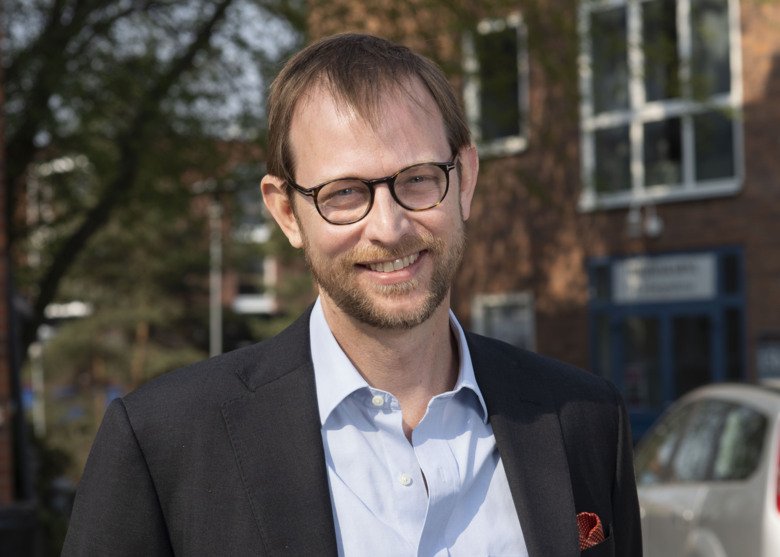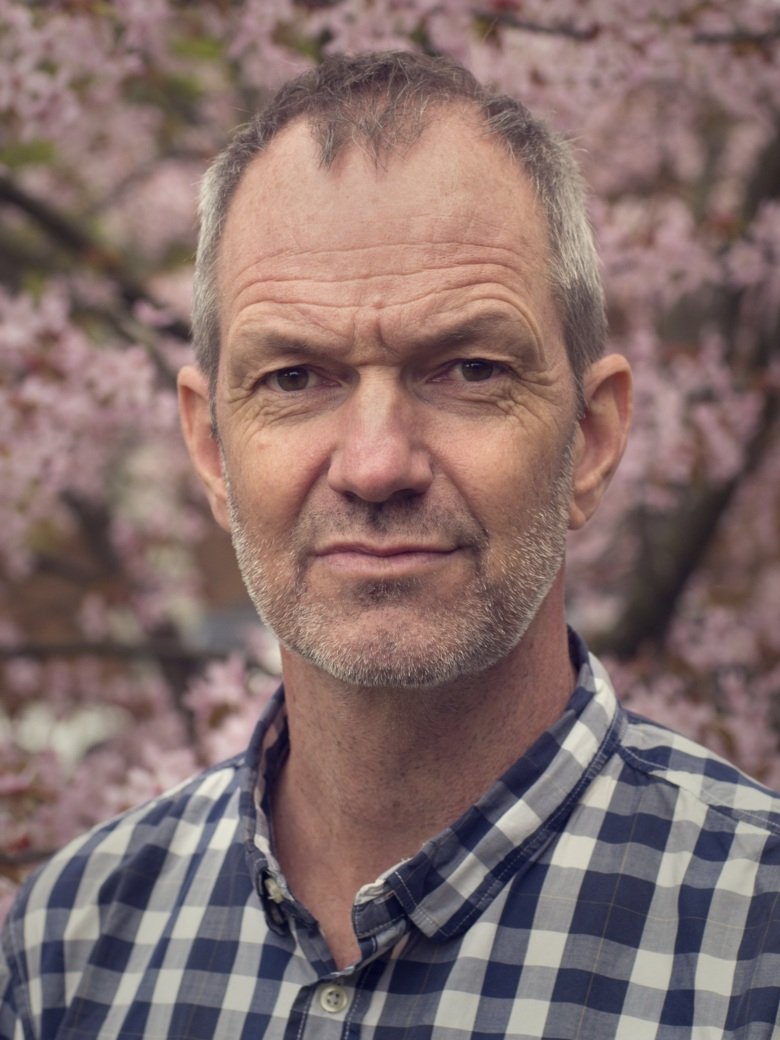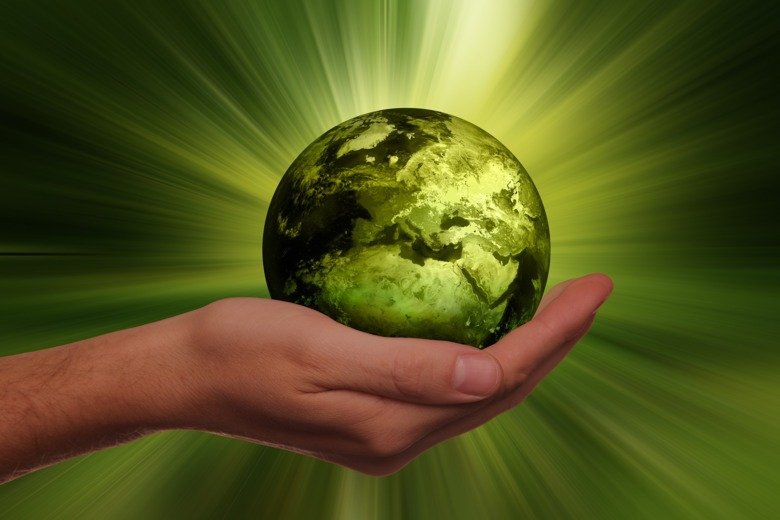Curious about climate-smart health – looking after our bodies and the planet

The COP26 agreement keeps the 1.5C goal alive and for the first time mentions the role of fossil fuels. The climate transition is about the future of humankind, but medical researchers say it can also have immediate health benefits here and now.
Text: Maja Lundbäck, in translation from Swedish for the magazine Medicinsk Vetenskap no. 4 2021
Asthma, chronic obstructive pulmonary disease and lung cancer. Diabetes, dementia and diarrhoea. Cardiovascular disease, insect-borne diseases, anxiety and depression. Stress, hunger and premature births. Global warming threatens our physical and mental health.
“The impact climate change will have for so many people cannot be over-emphasised. Climate change is the greatest threat to our health on a global scale and will remain so for a very long time to come,” says Daniel Helldén, PhD student in the Department of Global Public Health.
The consequences are already here
Melting ice, rising sea levels, hurricanes, severe rainfall, landslides, flooding, drought and fires... In August, the UN Intergovernmental Panel on Climate Change, the IPCC, released its latest report showing that it is now clear beyond all reasonable doubt that human emissions of greenhouse gases have led to global warming. The biggest villains are fossil fuels such as coal, oil and gas, where emissions of carbon dioxide are the biggest contributors to the increase in the greenhouse effect and disruption of global temperature levels.
We know that we have to make changes to mitigate climate change for the plant and animal life on this planet and for future generations of our own species.
At the recently concluded COP26 climate summit, the countries of the world agreed to repeat the Paris Agreement's goal of limiting global warming to 1.5 degrees. Net emissions must be reduced to zero by 2050. To enable the poor countries to make climate adaptations, the rich countries' aid must double by 2025 compared to 2019. For the first time, the role of fossil fuels is mentioned. But when it comes to coal power, the formulation is vague, it should only be "phased down", not "phased out".
If the promises made in Glasgow are not watered down along the way, we may be able to halt global warming at 1.8°C, according to an initial analysis carried out by the International Energy Agency (IEA).
At the same time, a report from the World Meteorological Organization (WMO) shows that the levels of greenhouse gases in the atmosphere are at their highest in three million years. There are also plenty of examples showing that the consequences are already here. In October, a study in the journal Natural Climate Change showed that at least 85 percent of the earth’s population is already suffering from climate change caused by human activity.
“When it comes to the climate transition and the impact on our health, I think lots of people think this is something happening a long way away or that will happen a long time in the future, but that’s something of an illusion. We are increasingly seeing the impacts of climate change here and now, and extreme weather is only going to accelerate,” says Daniel Helldén.
Reduced emissions benefit the climate and health
Weather phenomena affect us in the form of mortality and illness, e.g. following cyclones and storms. One difficulty in climate efforts is the long timeframe – even if we currently manage to do everything right, the weather won’t change back again immediately.
But the climate transition can also have an immediate positive impact on our health right now. One example is reducing air pollution.

“Air pollution is the fourth most important risk factor when it comes to the global sickness burden,” says Petter Ljungman, a researcher in environmental epidemiology at the Institute of Environmental Medicine, who has conducted several studies on the impact of air pollution on our health.
Cars, flights and factories, the same eco-villains that emits carbon dioxide and contribute to the greenhouse effect, also emit particles that are bad for people’s health. Nitrogen dioxide content is also increasing, a problem for people with asthma in cities. In Sweden, nitrogen dioxide content has fallen sharply in recent years. To improve short-term health locally in Sweden, we probably mainly need to focus on combating particle content, despite these levels also having fallen significantly.
When we breathe in particles, it causes local inflammation in our lungs. The very smallest particles can make their way past the alveoli and out into other organ systems. Besides asthma, chronic obstructive pulmonary disease, lung cancer and lung inflammation, cardiovascular disease is strongly linked to air pollution. Twenty-five percent of all premature deaths from cardiovascular disease can be attributed to air pollution. Many of our chronic lifestyle diseases have common disease processes, such as low-grade inflammation. Air pollution also increases the risk of diabetes, premature births and dementia. The particles can get past the blood-brain barrier and into the brain.
“It is probable that air pollution also has an impact on the autonomic nervous system which controls the pulse, blood pressure and the gut,” says Petter Ljungman.
Stricter guidelines on air quality
The WHO recently issued new, stricter guidelines on clean air quality. For the smallest particles, the threshold was lowered from ten to five microgrammes of particles per cubic metre of air per year. According to the WHO, lower levels are better for health economics, and also benefit the climate.
Air pollution combined with high temperatures is a particularly bad combination for human health. In many parts of India, emissions are high, as are temperatures. Petter Ljungman is now heading up a major research project to find out how health is affected by the amount of exposure to emissions.
“We are using satellite data from NASA to produce a model that enables us to look back at emissions over time,” he explains.
The huge amounts of data to be analysed have led to the researchers calling in AI. The next step is to link the database to health cohorts to see how lung health and cardiovascular health have been affected depending on the level of exposure.
“The aim is to give decision-makers information so that they can make better decisions to reduce amounts of air pollutants, so improving health and reducing climate impact,” he says.
Petter Ljungman sees great benefit from talking about the link between climate and health.
“We have the health of the planet to think about, and the health of our fellow creatures and plants and then we have ourselves. But I think it’s a good thing to talk about health and the number of deaths because that makes it easier to calculate the economic consequences of a poor climate,” he says.
Compared with other parts of the world, Sweden’s levels of pollution are low. Particle content increases the further south you go.
“In Stockholm, the smallest particle levels are somewhere between 6 and 12 microgrammes per cubic metre. Levels are slightly higher in Malmö, around 8 to 15. Studies that I and my colleagues have conducted show that there is a higher risk of death and illness even at low levels,” says Petter Ljungman.
Children are especially vulnerable
With his colleagues, Daniel Helldén has brought together research to find out how children’s health is being affected around the world. He thinks it is remarkable how little research there is in this field.
“Children are especially vulnerable, both because their bodies are developing and because they are so dependent on other people,” he says.
It is clear that children living in better socioeconomic conditions are affected less than those who are already living in poverty and deprivation. This can already be seen in children’s health in low-income countries and in geographically vulnerable areas like strips of coastline or in the desert.

“Infectious diseases such as malaria and dengue fever have already spread to more areas. We also think we will see an increase in diseases causing diarrhoea. This will counteract the major improvements in children’s health we have seen across the globe in recent decades,” he says.
Daniel Helldén explains that the biggest problem is that climate change risks undermining the factors that are important in children’s lives and that enable them to enjoy good health.
“Children need nutrition but they also need to be able to develop, learn and have socioeconomic security,” he says.
Studies from Bangladesh show that rising sea levels are reducing opportunities for farmers to farm the soil effectively.
“This leads to increased socioeconomic stress for these families and increases the risk of children not having the same education and development opportunities,” he says.
Up until now, the impact on Swedish children has been relatively small, but it is not insignificant. More cases of asthma are expected in Swedish children too as a result of a more rapidly changing climate. There is also a risk that climate change will contribute towards mental illness in Swedish children and young people. According to one study of 10,000 children and young people in ten countries, including Finland and the UK, one in two 16–25 year-olds think that humanity is doomed. Two out of three have a gloomy view of their own future due to climate change. The study is described as the largest scientific study of climate anxiety in young people.
A UNICEF report recently showed the extent of children’s vulnerability, asserting that the majority of the children on earth are already suffering from at least one form of climate impact and one in three are suffering from more than one climate threat.
The solutions lie at systemic level
Daniel Helldén believes that as individuals we can make important everyday choices and help to reduce our climate footprint.
“Being a good role model benefits the transition to a greener society. I find that most people are doing as much as they can. Many people are doing more now than they were a few years ago. This difference is largely down to the huge engagement from young people,” he says.
Norms and values are one thing. Laws and regulations are a different matter, however. Despite everything, Daniel Helldén thinks the big solutions to the climate crisis lie at systemic level.
“It’s going to take a change in society and that has to come from governments and decision-makers,” he says.
Petter Ljungman agrees. Even if there are things that we can do as individuals, such as reducing our use of fossil fuels when driving and thinking about how much wood we burn, it’s at systemic level that things need to happen, he thinks.
“To seriously improve air quality, we need to take action at society level, not just at individual level. We need to create urban environments where we can live with fewer journeys by private vehicles, and expand public transport, as well as examining the contribution made by industry to air pollution,” he says.
Switching our food consumption is another important climate issue. Today, food production and consumption accounts for a quarter of global greenhouse gas emissions. But eating a more plant-based diet and cutting back on red meat can reduce emissions. This kind of behavioural change to do with diet will also reduce the risk of illnesses such as cardiovascular disease.
The pandemic affected emissions
Mats J. Olsson is a professor of psychology at the Department of Clinical Neuroscience and is fascinated by how the COVID-19 pandemic achieved more or less voluntary behavioural changes around the world. In the first wave, he soon noticed how societies in lockdown had an immediate effect on emissions. Like many of us, he too saw the pictures of the city of Delhi in India with its population of millions, suddenly gain clear blue skies. At the same time, reports showed how content of the smallest particles fell from 80 microgrammes per cubic metre to an average of 35.

In the first wave of the pandemic, Mats J. Olsson and his team therefore took the opportunity to carry out a study on lifestyle changes to reduce greenhouse gases, to find out how the changes were affecting their quality of life. They asked people in the Stockholm region how well they had kept to the restrictions and calculated how much this meant in terms of reduced carbon dioxide emissions. Then they studied how much the individual had had to pay in the form of changed quality of life.
“The express ambition of the article was to specifically answer the question of which behavioural changes led to the greatest reduction in carbon dioxide in the atmosphere at the least psychological cost,” he explains. The result surprised him.
“We did see that the behavioural changes due to the pandemic in general had a psychological cost, in terms of quality of life, but in many cases this was not very high,” he says.
Not travelling for work and avoiding shopping and going to restaurants did not have a particularly negative effect on quality of life, while these behavioural changes had a major impact on reducing greenhouse gas emissions. On the other hand, many people felt badly about not being able to travel in their personal lives.
“Our findings may be interesting to every government or authority looking to draw up rules and policies on climate-friendly behaviour,” he says.
The participants in the study filled in the survey between the end of May and the beginning of August in the first wave of the pandemic.
Mats J. Olsson thinks that behavioural change can be an important element in halting climate change.
“But we need to know how to modify our behaviour in a climate context. We need to equip people with knowledge and give them opportunities to change their behaviour,” he says.
To succeed in motivating individuals towards behavioural change in different ways, he thinks that information will probably need to be adapted to different groups.
“Of course the fact that the effects of an individual’s behaviour are minimal on a global scale – and also at a distance in time and space – poses a particular challenge. But it is essential that we work on the climate question from different angles, not just through technical solutions,” he says.
Three things you can do that are good for the climate and health
- Cycle – leaving the car at home and pedalling through town means less pollution in your local area, plus free exercise.
- Eat planet-smart – reducing your meat intake and eating more veg improves your own health and that of the planet.
- Patch and mend clothes – not buying new clothes all the time reduces greenhouse gas emissions across the globe, and people in poor countries won’t have to sacrifice their health in an often toxic manufacturing process.
 Photo: Pixabay
Photo: PixabaySpotlight on sustainable development and health
A key objective of the UN's Agenda 2030 is health and well-being for all people regardless of age and where in the world they live. The intention is described in particular in Sustainable Development Goal (SDG) three of the agenda. Researchers at Karolinska Institutet contribute every day to the work for sustainable development and health globally. Here we have collected a selection of web pages, news articles and features describing the efforts of our researchers.
